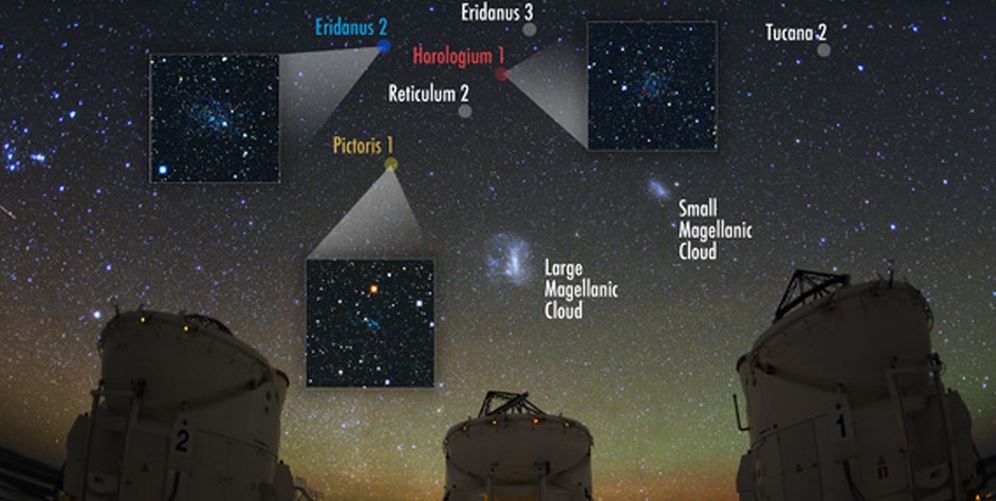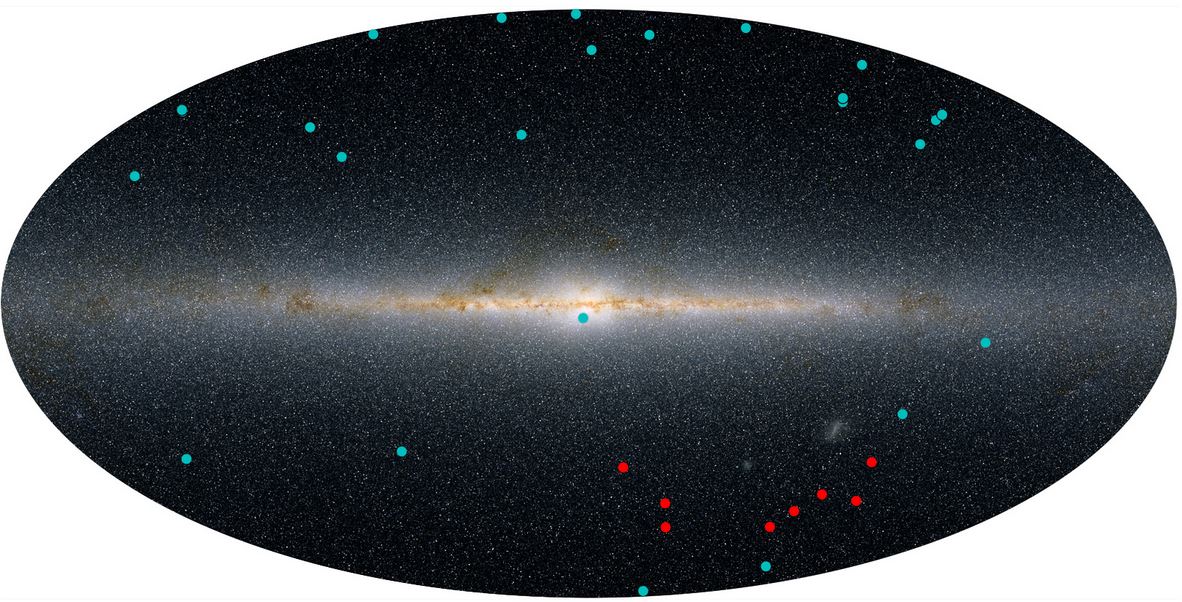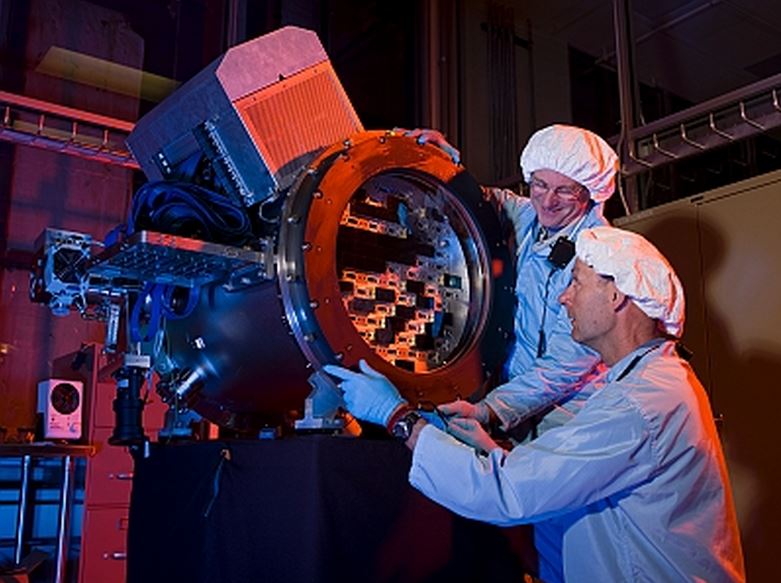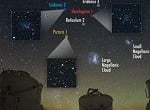American and British scientists have independently discovered a total of nine tiny dwarf satellite galaxies orbiting the Milky Way, our home galaxy. They say dwarf galaxies may hold the key to understanding dark matter, and also how larger galaxies are formed.
A dwarf galaxy is a small galaxy consisting of from fewer than 100 stars to several billion, which astronomically speaking is a small number. Our own Milky Way has between 200 billion and 400 billion stars.
Scientists at the Dark Energy Survey, which is based at the US Department of Energy’s Fermi National Accelerator Laboratory, and an independent group of researchers from the University of Cambridge in England, jointly announced their findings on Tuesday.

Sergey Koposov said he could not believe his eyes when so many satellites were discovered in such a small area of the sky. (Image: University of Cambridge)
Both scientific teams used data gathered during the first year of the Dark Energy Survey, whose data is publicly available, to carry out their analysis.
A significant result for astronomy and physics
One of the leaders of the Dark Energy Survey analysis, Dr. Alex Drlica-Wagner of Fermilab, said:
“The large dark matter content of Milky Way satellite galaxies makes this a significant result for both astronomy and physics.”
A satellite galaxy is a small celestial object (a galaxy) that orbits a larger galaxy, such as the Milky Way, due to gravitational attraction. Those with fewer than 100 stars are extraordinarily faint and difficult to identify.
These newly discovered satellite galaxies are a billion times fainter than the Milky Way, and have less than a millionth of the mass of our galaxy. The nearest one is 100,000 light years away.
The Cambridge team’s lead author, Sergey Koposov, who works at the Institute of Astronomy at the University of Cambridge, said:
“The discovery of so many satellites in such a small area of the sky was completely unexpected. I could not believe my eyes.”
Astrophysicists have previously found over two dozens of these satellite galaxies orbiting our Milky Way. Half of them were discovered in 2005-2006 by the Sloan Digital Sky Survey, which later became the Dark Energy Survey. After that initial burst of discoveries, the rate tailed off dramatically and then went dead for five years.

The previously-discovered dwarf satellite galaxies are in blue and the newly discovered candidates are in red. The Milky Way is the light horizontal band in the middle. (Image: Yao-Yuan Mao, Ralf Kaehler, Risa Wechsler)
New portion of the sky being observed
The Dark Energy Survey is observing a new part of the southern celestial hemisphere, covering a different portion of the sky than the Sloan Digital Sky Survey.
The dwarf galaxies announced today were discovered in a search in just the first of the planned five years of Dark Energy Survey data, covering approximately one-third of the portion of the sky that the Dark Energy Survey will study.
The researchers believe that after having gone through the full Dark Energy Survey, they will have found up to 30 of these satellite galaxies.
These latest discoveries will need to be confirmed. However, the researchers on both sides of the Atlantic point to their size, low surface brightness, and considerable distance from the center of the Milky Way, as evidence that they are excellent candidates.
A chance to learn more about dark matter
The researchers say that newly discovered galaxies present them with more opportunities to search for signatures of dark matter. Dwarf satellites have much more mass in unseen matter than in stars – they are dark-matter dominated.
Nobody knows what the nature of this dark matter is. The authors believe it could consist of particles that annihilate each other and release gamma rays. As dwarf galaxies have no other gamma ray sources, they are ideal places to search for signs of dark matter annihilation.
The authors are confident that further study of these satellite galaxies will lead to even more sensitive searches for dark matter.
The Large Area Telescope Collaboration for NASA’s Fermi Gamma-Ray Telescope mission announced in a separate result today that they did not see any significant excess of gamma ray emission linked to the new Dark Energy Survey objects. “This result demonstrates that new discoveries from optical telescopes can be quickly translated into tests of fundamental physics,” they said.
Peter Michelson, spokesperson for the Large Area Telescope (LAT) collaboration, said:
“We did not detect significant emission with the LAT, but the dwarf galaxies that DES has and will discover are extremely important targets for the dark matter search. If not leading to an identification of particle dark matter, they will certainly be useful to constrain its properties.”
The world’s most powerful digital camera
The Dark Energy Survey is a five-year project to photograph much of the southern sky in unprecedented detail. Its primary instrument is the world’s most powerful digital camera – the 570 megapixel Dark Energy Camera. It can see galaxies as far away as 8 billion light years from Earth.

Scientists build a prototype of the Dark Energy Camera. (Image: Fermilab)
The Dark Energy Camera, which was built and tested at Fermilab, is now mounted on the 4-meter Victor M. Blanco telescope at the Cerro Tololo Inter-American Observatory in Chile, up in the Andes Mountains.
The Dark Energy Survey’s five-year mission is to learn more about the nature of dark energy, the enigmatic force that makes up approximately 70% of all matter and energy in the Universe.
Scientists say that dark energy is probably the key to understanding why the Universe is expanding at a progressively faster rate.
Keith Bechtol, who works at the Kavli Institute for Cosmological Physics at the University of Chicago, and helped lead the Dark Energy Survey analysis, said:
“The Dark Energy Camera is a perfect instrument for discovering small satellite galaxies. It has a very large field of view to quickly map the sky and great sensitivity, enabling us to look at very faint stars. These results show just how powerful the camera is, and how significant the data it collects will be for many years to come.”

